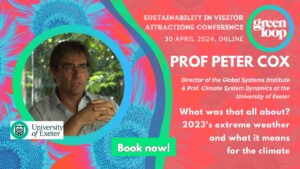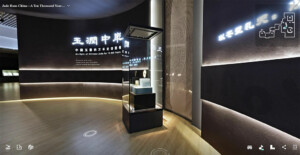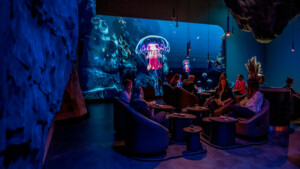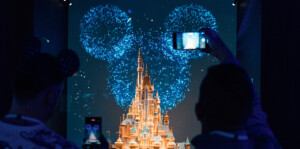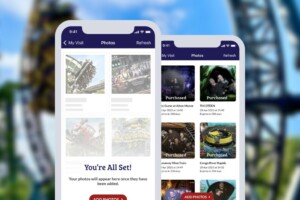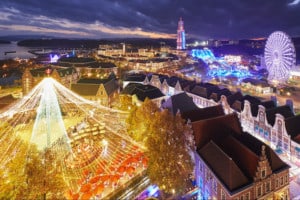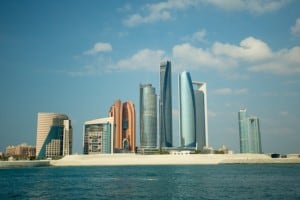The reporters, Karen Bartlett and Leo Lewis experience Eejanaika (right), S & S Worldwide’s steel 4th Dimension roller coaster (world’s 2nd after X2 at Six Flags Magic Mountain) at Japan’s Fuji-Q Highland – a fiendish ride which allows the seats to revolve through 360 degrees and each one turns the occupants upside down 14 times – and chart the history of the amusement park’s quest to provide high octane thrills.
They chat with Brendan Walker, a “Thrill Engineer” who is carefully examining the way in which our minds respond and react when riding white knuckle thrill rides and coasters. There is talk of a predilection for such sensations being hereditary, in the genes, and Walker has been tested and is waiting for the results… He is fascinated by the mental response to thrills and anger and explains that when he is on planes he “read(s) out accounts of air disasters to see how people react”, adding, with what I imagine is a degree of understatement, “My girlfriend hates it when I do that.”
Related: Roller Coasters: A Mystery Mine Movie, Part 1 / Roller Coasters: A Mystery Mine Movie, Part 2 A Designer’s View: Six Flags’ X2: A Ride of Genius? / X2 – Thrilling As Ever, Almost To A Fault
Spinning the Waltzer
“In the old days fairground workers knew how to work with all those elements, ” Walker says. “They could read from people’s expressions how afraid they were, and they’d make the ride go higher, or faster — or come and spin your car if you were on the waltzer. What we want to do is measure those responses in a quantifiable way and program the rides themselves.”
Working with the British ride company RoboCoaster, Walker is beginning to construct, at the Max Planck Institute in Germany, a larger prototype of an adaptive ride that can be programmed and changed to suit different responses. RoboCoaster rides, which are based on industrial robots, come in two or four-seat variations. Their smaller size makes them most adaptable to an individual experience. Walker predicts that larger rides could group together similar-scoring sensation-seekers for a pre-programmed experience suited to their needs.
Read the full article here: How to embrace fear : Roller Coaster Technology
It is an insightful look into how those at the forefront of ride engineering are seeking to measure human responses to “thrill” elements in order to maximise the effectiveness of their attractions and rides. They talk to a number of industry insiders and make some useful observations on the way people react to certain stimili. At the end of the day though, integration is key: we are reminded that technology is only as good as the experience it helps to create. As David Wilson, from Walt Disney Imagineering, explains, “We can create cool technology, but at the heart of what we’re doing is the story we want to tell.”
Image: Kazuhiro Nogi/AFP

